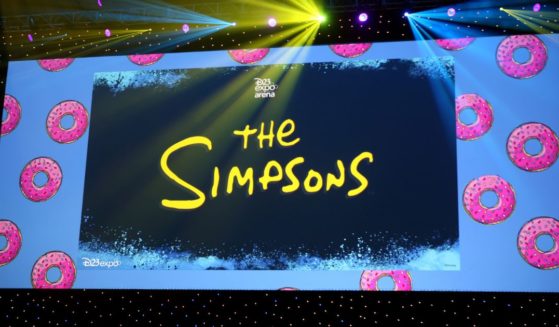Scientists Discover Water on 'Super-Earth' Exoplanet for the First Time, Say It Could Be 'Habitable'
Astronomers believe they have discovered the first planet outside of our solar system that has both water and temperatures that could support life.
Researchers from the University College London identified water vapor in the atmosphere of the exoplanet — or planet outside of the solar system — of K2-18b.
Temperatures on the planet are estimated to be in a range between -100 and 116 degrees Fahrenheit.
“Crude models predict that K2-18b’s effective temperature falls somewhere between -100 and 116 degrees Fahrenheit, and if it is about as reflective as Earth, its equilibrium temperature would be roughly the same as our home planet’s,” National Geographic reported.
Using #Hubble data, @UCL astronomers detected water vapour in the atmosphere of K2-18b, making it the only #exoplanet known to have both water & temperatures that could support life. Artist’s impression by @ESA /Hubble, M. Kornmesser https://t.co/rmp1SRjfkw pic.twitter.com/nS49K5N8IC
— HUBBLE (@HUBBLE_space) September 11, 2019
K2-18b orbits a red dwarf star and is located about 110 light years from Earth.
The University College London said in a Wednesday news release, “K2-18b, which is eight times the mass of Earth, is now the only planet orbiting a star outside the solar system, or ‘exoplanet,’ known to have both water and temperatures that could support life.”
“Given the high level of activity of its red dwarf star, K2-18b may be more hostile than Earth and is likely to be exposed to more radiation,” the release added.
UCL researcher Dr. Angelos Tsiaras said, “Finding water in a potentially habitable world other than Earth is incredibly exciting. K2-18b is not ‘Earth 2.0’ as it is significantly heavier and has a different atmospheric composition. However, it brings us closer to answering the fundamental question: Is the Earth unique?”
Scientists used date collected between 2016 and 2017 by the European Space Agency/NASA Hubble Space Telescope to detect the water.
“The results revealed the molecular signature of water vapour, also indicating the presence of hydrogen and helium in the planet’s atmosphere,” UCL said.
Michael Greshko with National Geographic explained that as K2-18b makes its orbit, the light from its star shines through the planet’s atmosphere.
“But not all that starlight makes it through, since chemical compounds in the atmosphere absorb light at telltale frequencies,” Greshko wrote. “Water, in particular, absorbs near-infrared light at specific wavelengths, creating a visible sign of water vapor.”
Tsiaras and Dr. Ingo Waldmann, also with UCL, published the findings of the study in Nature Astronomy on Wednesday.
“With so many new super-Earths expected to be found over the next couple of decades, it is likely that this is the first discovery of many potentially habitable planets,” Waldmann said concerning their research.
“This is not only because super-Earths like K2-18b are the most common planets in our Galaxy, but also because red dwarfs — stars smaller than our Sun — are the most common stars.”
Andrea Leadsom, the U.K.’s secretary of state for business, energy and industrial strategy, summed up the importance of the findings well.
“This discovery by UK researchers is a giant leap forward in this endeavour, opening a new world of possibilities,” she said in a statement.
“The secrets of our universe are out there, and I am enormously proud that our Government-backed researchers and councils are at the forefront of efforts to unlock answers to mysteries that have endured for centuries.”
Truth and Accuracy
We are committed to truth and accuracy in all of our journalism. Read our editorial standards.












